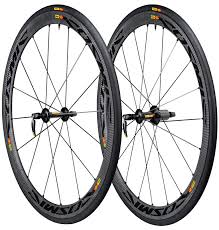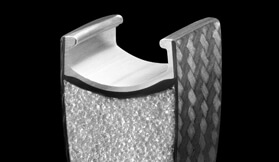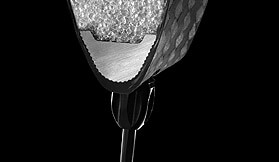Mavic Carbone 40 Elite Wheelset Review and Comparison
By Jim Weaver, Service Manager
Fit Werx, Waitsfield, VT
 Those who have been looking for an aerodynamic carbon rimmed clincher wheelset know that the price of admission for quality options is not low. While inexpensive ($1,500 or less) carbon clinchers can be found, for the most part, these are unknown brands, with generic rims purchased from a generic carbon factory in Asia and then built-up with an equally generic hub. Testing and quality control do not tend to be the hallmark of such wheels. We have seen that the quality and durability of many such wheels can be dubious and, in our experience, wheels are not a good place to be messing around when it comes to potential failure points.
Those who have been looking for an aerodynamic carbon rimmed clincher wheelset know that the price of admission for quality options is not low. While inexpensive ($1,500 or less) carbon clinchers can be found, for the most part, these are unknown brands, with generic rims purchased from a generic carbon factory in Asia and then built-up with an equally generic hub. Testing and quality control do not tend to be the hallmark of such wheels. We have seen that the quality and durability of many such wheels can be dubious and, in our experience, wheels are not a good place to be messing around when it comes to potential failure points.
The major carbon wheel manufacturers, such as Corima, Zipp, Enve, Reynolds, HED, et al, make great wheels. The cost of full carbon clincher wheelsets from these brands is usually upwards of $2,700 for a set. One name that was notably absent from the list of carbon clincher wheel producers was the biggest wheel maker on earth – Mavic. Historically, Mavic was somewhat reluctant to jump into the carbon rim market, due to their dissatisfaction with existing braking and heat dissipation technology. It is no secret that most carbon rims do not brake as consistently across weather conditions as alloy rims, although the major manufacturers have been aggressively addressing this problem and improvements have been made. Heat dissipation from braking has been another bugaboo for carbon rims and can cause problems in extreme conditions. Again, the major carbon wheel manufacturers have made great strides on this front, but Mavic was still not satisfied and did not release a carbon clincher equipped wheelset – leaving their full carbon rims, like those found in the Mavic Cosmic Carbone Ultimate, to tubular users only. However, last season, Mavic introduced a new carbon clincher based rim design in the clincher version of the Mavic Cosmic CXR 60 C wheels and later the Cosmic Carbone 40 C. These wheels used Mavic’s TGMax hybrid carbon clincher rim construction and were designed to compete with offerings from all the names above. Like those other offerings, prices started over $2700 a pair. However, for 2015 there was a new offering in Mavic’s line – one that received little press and Mavic has barely talked about, but is arguably one of the most compelling new carbon clincher wheels on the market – the Mavic Carbone 40 Elite C. The Mavic Carbone 40 Elite new wheelset has an MSRP of $2,100, including tires and tubes, thus hitting a price point below the high quality carbon clincher competition. The Mavic Carbone 40 Elite also offers the same TGMax rim technology as found in the Mavic Cosmic Carbone 40 C and Mavic CXR 60 C wheels and weighs less than wheels costing almost $1000 more. A reputable, name brand carbon clincher for what is effectively below $2000 (subtract the tires and tubes) and is not only not a boat anchor, but is actually pretty light? Now you have our attention Mavic.
 So, what is Mavic TGMax? The 40mm deep rim of the Mavic Cosmic Carbone 40 Elite is actually a unique combination of an aluminum alloy exo-skeletal system surrounded by carbon fiber. The main body of the rim is carbon fiber that is bonded to an aluminum reinforced rim bed. This rim bed is constructed of Mavic’s proprietary Maxtal aluminum alloy, stronger than the usual 6061 aluminum used in many alloy rims, and the same alloy that Mavic has used in their best alloy wheels for years. This alloy rim “liner” allows the tire bead to seat into metal for strength. The heat from the carbon fiber brake surface is thus transferred to the allow rim bed, where it is more effectively dissipated by the aluminum. The result is a rim that brakes better than most carbon rims, while avoiding the potential problems of heat build-up.
So, what is Mavic TGMax? The 40mm deep rim of the Mavic Cosmic Carbone 40 Elite is actually a unique combination of an aluminum alloy exo-skeletal system surrounded by carbon fiber. The main body of the rim is carbon fiber that is bonded to an aluminum reinforced rim bed. This rim bed is constructed of Mavic’s proprietary Maxtal aluminum alloy, stronger than the usual 6061 aluminum used in many alloy rims, and the same alloy that Mavic has used in their best alloy wheels for years. This alloy rim “liner” allows the tire bead to seat into metal for strength. The heat from the carbon fiber brake surface is thus transferred to the allow rim bed, where it is more effectively dissipated by the aluminum. The result is a rim that brakes better than most carbon rims, while avoiding the potential problems of heat build-up.
Many Mavic alloy rims essentially consist of two layers, one being the bed where the tire mounts, and the other being the outer shell where the spokes thread into the rim. When you look at a Mavic rim, such as the Ksyrium SL or R-SYS, without the tire mounted, you will not find the spoke holes that you will find on the vast majority of other rims. The result is that rim strength per weight is arguably stronger. The tire bed on the Mavic Carbone 40 Elite is molded in this same way. The rim is constructed around an alloy seat where the spokes enter the rim, so that the spokes thread into this alloy seat. The remainder of the rim, and the structural support of the rim, is formed from 3K carbon fiber. The rim is filled with a high-density foam and this foam dampens road noise that can be so annoying on many hollow carbon rims, while at the same time adding strength  and stiffness to the rim. As with other rims that use this type of foam (like Corima), the rim should be very resistant to lateral flexing, a problem that plagues some carbon rims.
and stiffness to the rim. As with other rims that use this type of foam (like Corima), the rim should be very resistant to lateral flexing, a problem that plagues some carbon rims.
The Mavic Carbone 40 Elite wheels are built using straight-pull, bladed, double-butted steel spokes. The front wheel has 16 spokes, the rear 20. The front wheel spokes are laced radially. The rear spokes are laced radially on the non-drive side, and in a 1 cross pattern on the drive side. The hubs are designed so in the unlikely event of a broken spoke, replacement is quite easy, with very minimal hub disassembly. The way that the spokes thread into the rim also eases spoke replacement, and avoids that nasty problem of loose spoke nipples getting “lost” inside a rim. The bearing preload on the hubs is adjustable, the same as with many other Mavic wheels.
As with all new Mavic wheels, the Mavic Carbone 40 Elite wheels come with tires, in this case the Mavic Yksion Pro Powerlink in the rear, and the Mavic Pro Griplink in the front. Mavic believes that the tire and wheel work as a system, and thus they equip most of their wheels with tires designed specifically to work optimally with the rest of the wheel system. For 2015, Mavic has revised their tire design (and changed the manufacturing process) to lower rolling resistance, a concern that has plagued their tires in the past. So, a pair of 190 gram, high quality tires and tubes is included in the price of the wheels – arguably a $170 value.
I have spoken with riders who are concerned about the strength of carbon rims, feeling that they may be fragile. Really, this is not the case. High quality carbon rims are no less durable than alloy rims; if you hit something hard enough to damage a quality carbon rim, you would also damage an alloy rim. Like anything, you tend to get what you pay for and a cheap carbon rim will likely not produce similar results, but with quality carbon it will. This being said, for those riders for whom carbon rim durability is a concern, the Maxtal rim bed should allay these fears as they have an aluminum sub-structure throughout. Mavic wheels are durable in general and their hybrid carbon rims maintain this tradition and Mavic hubs are renowned for their durability and serviceability. I can confidently say that the Mavic Carbone Elite 40 wheels will be a comfortable, fast, and durable wheelset in the long-term.
So how does this wheelset compare to other carbon clincher wheels on the market? Looking simply at weight, the Mavic Carbone 40 Elite weighs in at 1,540 grams on the scale we have here in the shop. For an aero carbon clincher wheelset, the weight of the Mavic Carbone 40 Elite is not only competitive, but impressive. For example, a set of Zipp 303 Firecrest clincher wheels, 5 mm deeper, weigh in at 1,570 grams, and cost $2,725. A set of Enve 3.4 carbon clinchers, built with DT Swiss 240 hubs, weighs in 58 grams less than the Mavic Carbone 40 Elite, but they cost $2,900 and the front rim is not as deep. So, based simply on weight, the Mavic’s are a true bargain. Interestingly, one of the closest comparable wheels to the Mavic Carbone 40 Elite wheels is Mavic’s own Carbone 40 C wheelset at $2750. The Carbone 40 C wheelset has far more similarities than differences to the Mavic Carbone 40 Elite wheels. The rim and spoke configuration is the same and the only difference of note is that the hubs of the Mavic Carbone 40 C has a carbon/alloy hub instead of the full alloy hub shell of the Mavic Carbone 40 C Elite wheels. How does this matter? It doesn’t. Unless you simply desire the carbon fiber look of the Mavic Carbone 40 C, the Mavic Carbone 40 Elite offers all the performance and weight (the alloy hub equipped Carbone 40 C actually weighed 5 grams less than the carbon hub equipped version!) for $650 less. This makes for an extremely compelling story in the Mavic Carbone Elite 40 C – quite possible the true “sleeper carbon wheel” of 2015.
All in all, the Mavic Carbone 40 Elite is a very attractive wheelset. Yes, a Zipp carbon clincher might be a hair more aero, Corima’s may provide a better ride quality, and Enve makes a great all-rounder, giving you the option of DT Swiss or Chris King hubs. But, if spending close to $3,000 for carbon wheels is out of your range, the Mavic Carbone 40 Elites offer a lot of value and actually compete quite well with many of some of the most respected carbon clinchers in the business. Conversely, for just a little more than the “bottom feeder” brands on the market, you can get a wheel that is supported by a truly respected and proven brand name. In my opinion, the Mavic Carbone 40 Elite are a really exciting wheel. They not only serve the entry level full carbon rim shopper looking for a versatile wheel extremely well, but they also offer the higher tier level rider a lower priced alternative that doesn’t compromise performance, weight or ride quality in the price.
Stop by, or contact, a Fit Werx in the New York City area, outside of Boston, MA and near Burlington and Stowe, VT (Mad River Valley) for more information and to check out the new Mavic Carbone 40 Elite clincher wheel.
